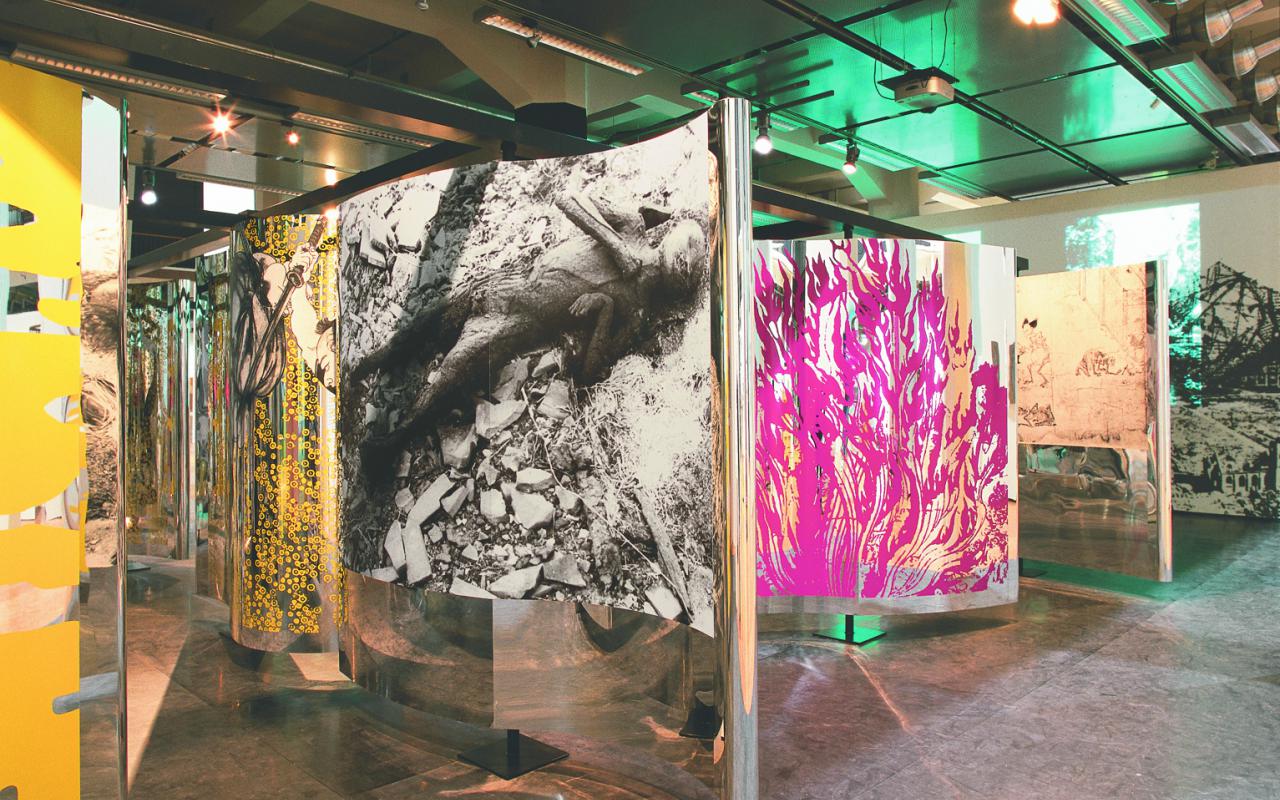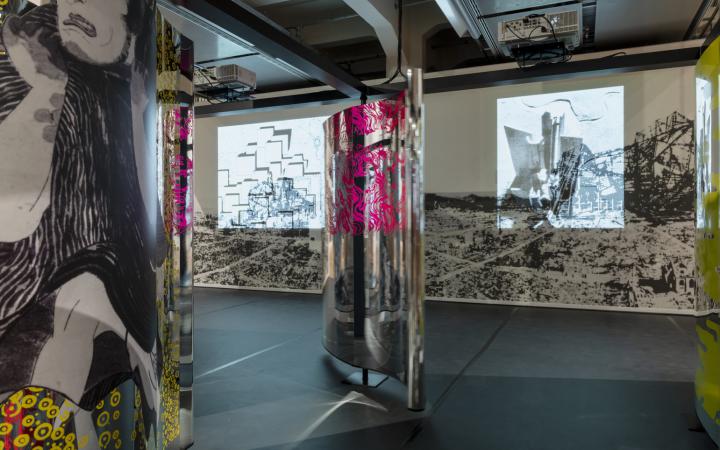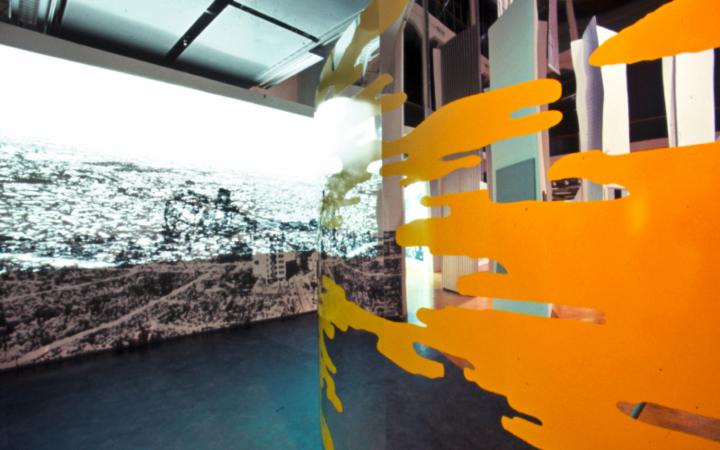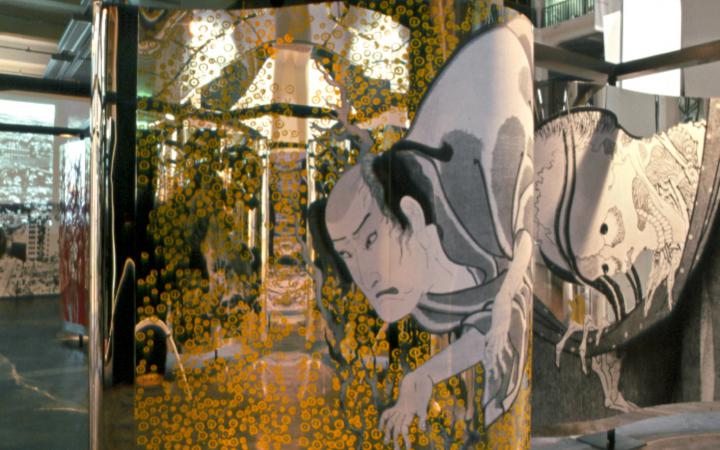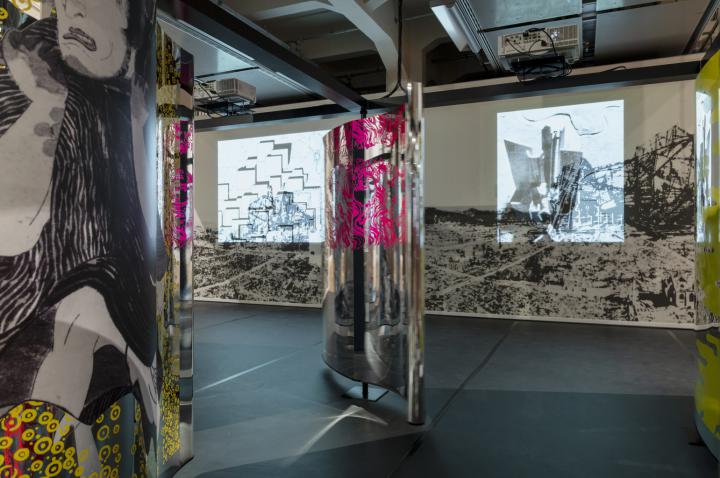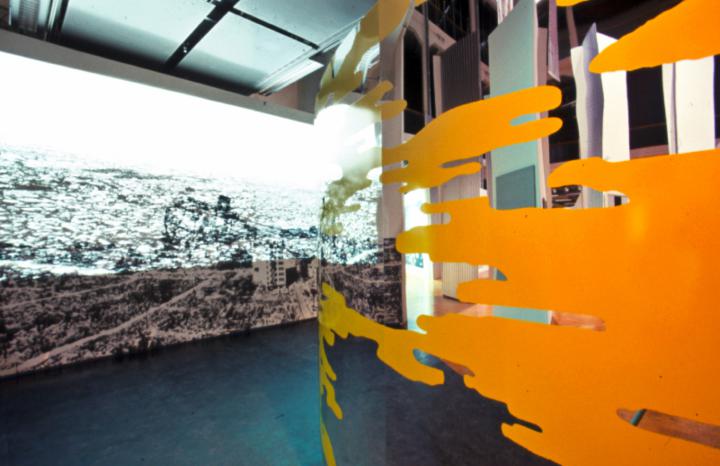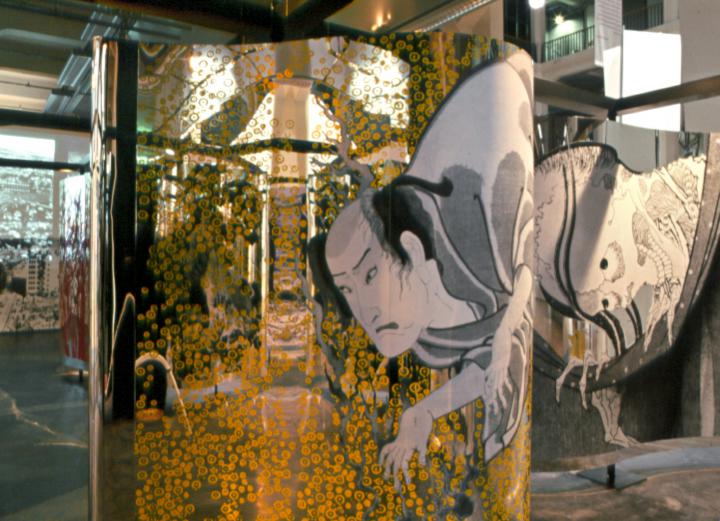Arata Isozaki
Electric Labyrinth
1968
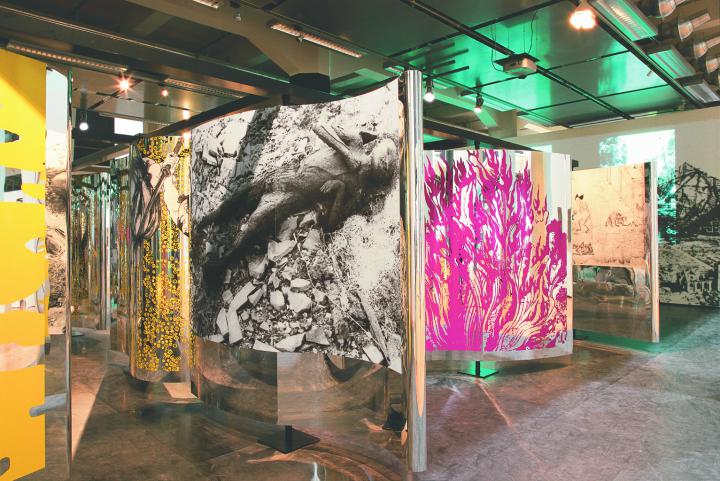
- Artist / Artist group
- Arata Isozaki
- Title
- Electric Labyrinth
- Year
- 1968
- Category
- installation, Sound installation, Video installation
- Material / Technique
- aluminum framing, curved wings made of wood with reflective aluminum surface and screenprint, laptop (PC), computer (Power Mac G4), control electronics, protection units, power supplies, anchor chairs, motors, friction clutches, UV lighting, projectors, amplifier, 2 speakers (passive), textile web print
- Dimensions / Duration
- Installation dimensions variable
- Contributors
- Collection
- Castello di Rivoli Museo d’Arte Contemporanea, Rivoli-Torino, Fundação de Serralves, Porto, ZKM | Center for Art and Media Karlsruhe
- Description
The Milan Triennale XIV of 1968 went down in history because of protests by students and artists. On its opening day, the building of the Biennale was occupied. During the protests, »Electric Labyrinth« by Japanese architect Arata Isozaki was destroyed, along with many other exhibits, In 2002, the ZKM reconstructed Isozaki’s installation for its 2002 exhibition »Iconoclash. Beyond the Image Wars in Science, Religion and Art«.
Isozaki’s »Electric Labyrinth« consists of twelve large aluminum panels, which have Ukiyo-e designs printed on them. Ukiyo-e (pictures of the floating world) is a Japanese art genre, which flourished from the 17th to the 19th century and includes painting and printed graphics. The artist selected depictions of ghosts and crisis situations in this genre, and combined them with photographs of the destruction of the cities of Hiroshima and Nagasaki by American atomic bombs in 1945. The convex and concave curved metal panels begin slowly to rotate the moment that visitors pass through an infrared beam. The visitors make their way through the rotating elements, and immerse themselves in a kinetic architecture of images and mirror reflections.
On a wall opposite one of the curved panels is the large-format photograph titled »The City of the Future is the Ruins«; it shows the devastated city of Hiroshima with two mounted iron structures. Slide projectors project images of around 240 future buildings, one after the other, onto the collage of photographs, so that the new world rising from it seems to fall into ruins over and over again.
The visual impressions are complemented by a sound installation. For »Electric Labyrinth«, Isozaki collaborated with his artist friends Kōhei Sugiura (graphic artist), Shōmei Tōmatsu (photographer), and Toshi Ichiyanagi (composer).
